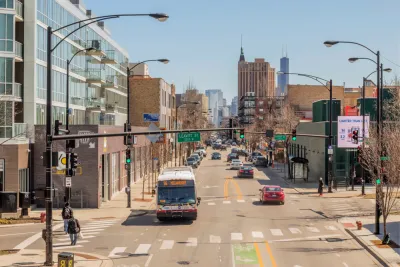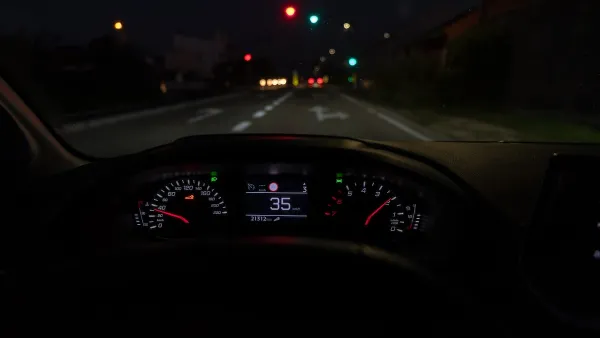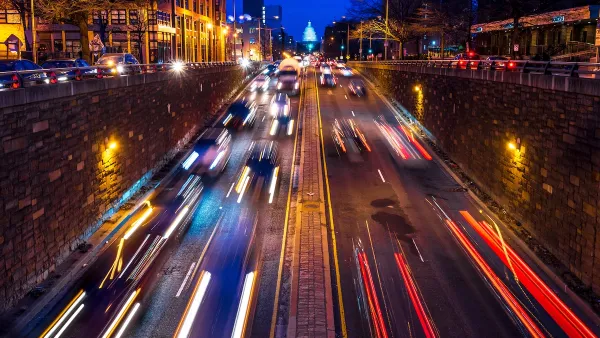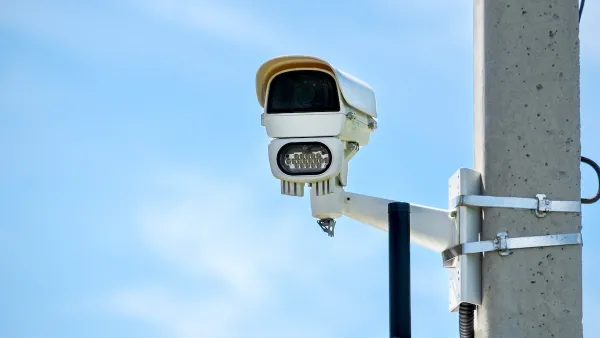The city's controversial traffic camera program tickets Black and Latino motorists more than white drivers. Infrastructure may play a role in why.

An investigation from ProPublica's Emily Hopkins and Melissa Sanchez reveals that Chicago's purportedly neutral traffic enforcement cameras issued citations to households in majority Black and Latino ZIP codes at a rate twice as high as in white neighborhoods. In 2020, when Black and Latino workers were more likely to keep going to work while many white workers worked from home, the ticketing rate in Black neighborhoods jumped to three times that of white areas. The traffic camera program monitors almost 300 locations distributed "roughly evenly" in the city's different neighborhoods. "The consequences have been especially punishing in Black neighborhoods, which have been hit with more than half a billion dollars in penalties over the last 15 years, contributing to thousands of vehicle impoundments, driver’s license suspensions and bankruptcies, according to ProPublica’s analysis."
Traffic camera programs in other cities, such as Rochester, Miami, and Washington, D.C., have shown similar disparities in ticketing, calling into question the supposed fairness of the devices, which have been touted by some supporters as a "race-neutral" way to reduce potentially violent police interactions. Chicago mayor Lori Lightfoot's policy chief, Dan Lurie, has said "the administration has been grappling with the 'twin challenges' of improving traffic safety while 'very intentionally ensuring that the burdens of fines and fees as a result of those kinds of efforts do not fall disproportionately on Black and brown residents.'" Lurie acknowledged the need to improve road infrastructure as part of the effort to reduce traffic fatalities and protect pedestrians.
While research shows traffic cameras can have a positive impact on driving behaviors, some critics call them a cash grab that disproportionately harms low-income residents. Instead, experts point to other traffic calming measures, such as medians and speed bumps, that can slow drivers.
The article details other factors that affect driver speeds and pedestrian safety, such as road width, residential density, and proximity to expressways—roads disproportionately built through historically Black neighborhoods.
FULL STORY: Chicago’s “Race-Neutral” Traffic Cameras Ticket Black and Latino Drivers the Most

Analysis: Cybertruck Fatality Rate Far Exceeds That of Ford Pinto
The Tesla Cybertruck was recalled seven times last year.

National Parks Layoffs Will Cause Communities to Lose Billions
Thousands of essential park workers were laid off this week, just before the busy spring break season.

Retro-silient?: America’s First “Eco-burb,” The Woodlands Turns 50
A master-planned community north of Houston offers lessons on green infrastructure and resilient design, but falls short of its founder’s lofty affordability and walkability goals.

Test News Post 1
This is a summary

Analysis: Cybertruck Fatality Rate Far Exceeds That of Ford Pinto
The Tesla Cybertruck was recalled seven times last year.

Test News Headline 46
Test for the image on the front page.
Urban Design for Planners 1: Software Tools
This six-course series explores essential urban design concepts using open source software and equips planners with the tools they need to participate fully in the urban design process.
Planning for Universal Design
Learn the tools for implementing Universal Design in planning regulations.
EMC Planning Group, Inc.
Planetizen
Planetizen
Mpact (formerly Rail~Volution)
Great Falls Development Authority, Inc.
HUDs Office of Policy Development and Research
NYU Wagner Graduate School of Public Service




























